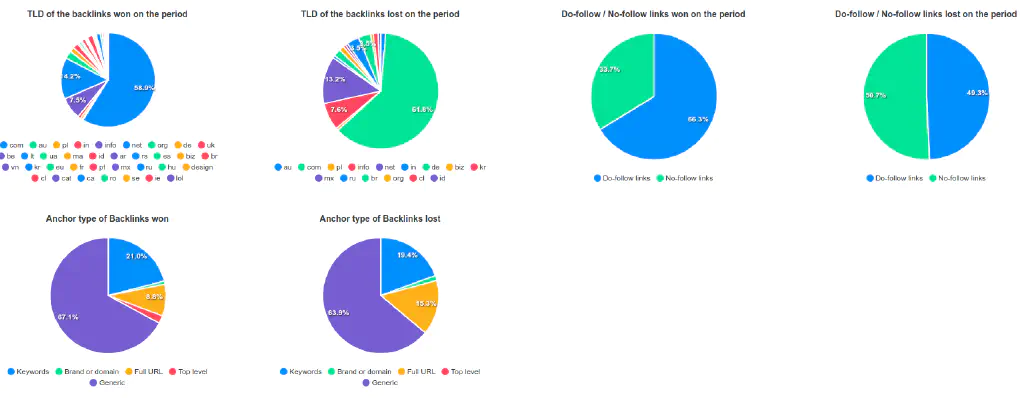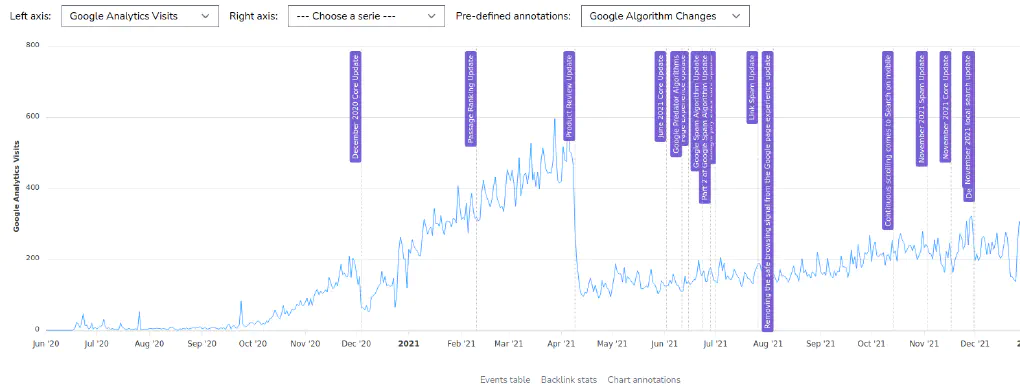One of the key points of any due diligence process is to check the backlinks carefully. The owner of the website on sale may have bought a paid backlinks campaign, which might in the future impact the ranking of the website drastically. There is nothing particularly wrong with a paid backlinks campaign, but most of the time, this kind of service does not offer the right level of quality.
However, this might be tricky to detect such an attempt to trick Google. In this article, you will discover one of our best methods to find out if there was any paid backlinks campaign.
A first red flag: a sudden increase of backlinks
Usually, when a website owner buys backlinks, the service is delivered relatively quickly. The interest of the backlinks seller is to deliver his service in a short period of time.
This is why you need to use the Website Due Diligence chart to spot any sudden increase of backlinks, especially recent ones as some website owners may attempt to boost the ranking of their website before or during the sale.
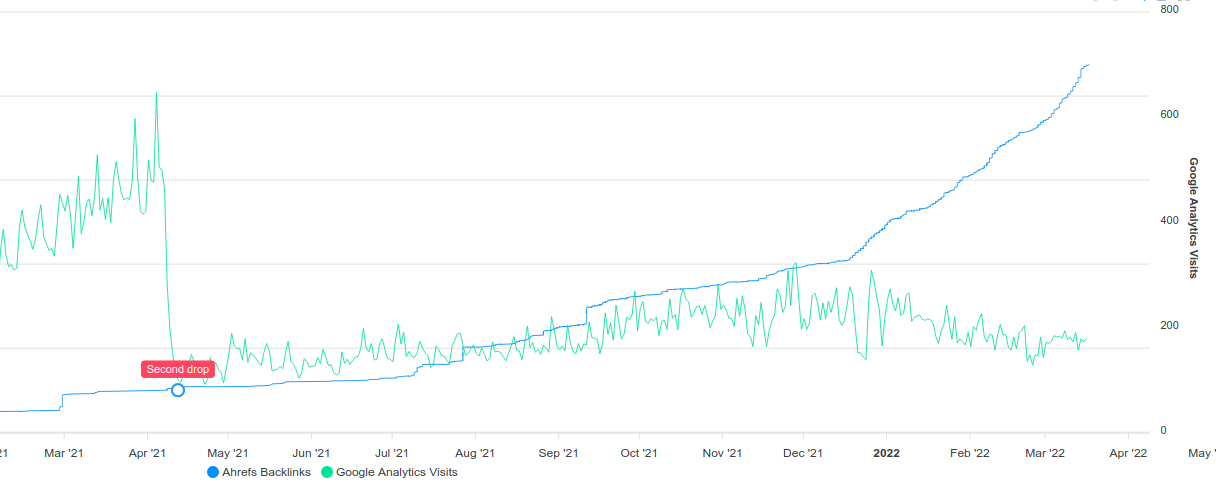
In the example above, you see that the number of referring domains doubled in four months. This is a big increase, occurring just before the owner decided to sell the website. Such an increase should immediately be a concern for you, and it must be investigated to avoid any further issues.
Analyzing the Backlinks profile of this period
On the whole period we have a pretty good diversified backlinks profile, as shown by Website Due Diligence charts.
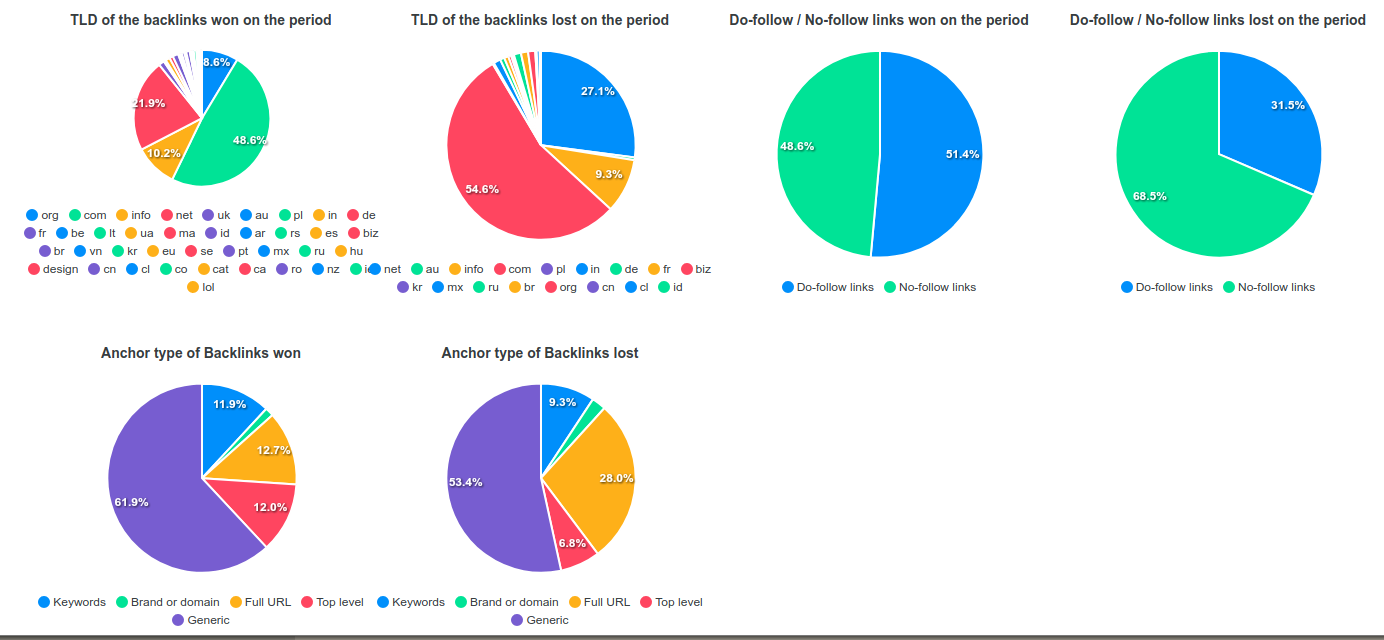
As you can see, the ratio between Do-follow links and No-follow ones is balanced, the TLDs (Top-level domain names) are diversified, and the anchor types are also mixed. So no particular red flag here.
As a reminder, the anchor types computed by Website Due Diligence are very useful to spot a potential anomaly. Indeed, when a Website owner buys backlink from a provider, the anchor of these backlinks will often be keywords-based. The system computes the following anchor types automatically:
| Anchor type | Description | Anchor Example |
|---|---|---|
| Full URL | The anchor is the full URL of the target article | <a href="https://kitchenn.io/best-coffee-machine">kitchenn.io/best-coffee-machine</a> |
| Brand or domain | The anchor is the brand or domain of the website | <a href="kitchenn.io/best-coffee-machine">Kitchenn</a> |
| Full URL | The anchor is the full URL of the target | <a href="https://kitchenn.io/best-coffee-machine">https://kitchenn.io/best-coffee-machine</a> |
| Top level | This is a special category, when the target URL is the homepage of the website | <a href="https://kitchenn.io/">Best coffee machine</a> |
| Keywords | The anchor is made of keywords from the article slug | <a href="https://kitchenn.io/best-coffee-machine">The best coffee machine<a> |
| Generic | The anchor is generic | <a href="https://kitchenn.io/best-coffee-machine">Click here</a> |
So, when you see a high number of Keywords anchors, this may indicate a paid backlink campaign. Here this is not the case. At least for the full period of time.
Focus on the recent increase of backlinks
The analysis of whole period allows us to take notes about what are the global numbers of the backlink profiles. We have seen above that the almost 50% of backlinks are Do-follow ones, and that 12% of backlinks have a Keyword-based anchor.
Now, let’s zoom on the recent period, starting from the “Suspicious backlinks” label.
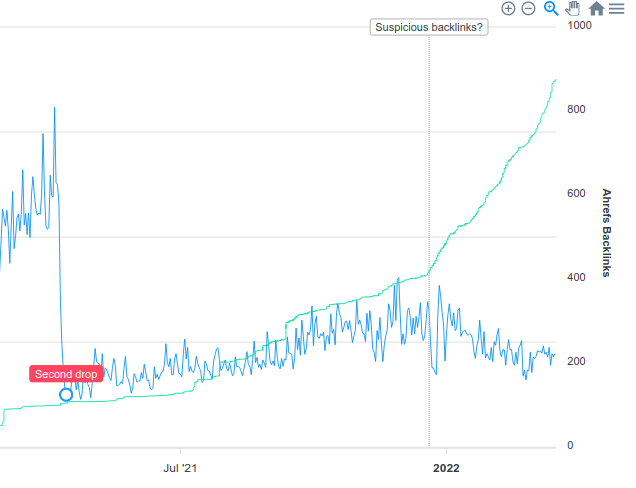
For this period, the backlinks profile is as follows:
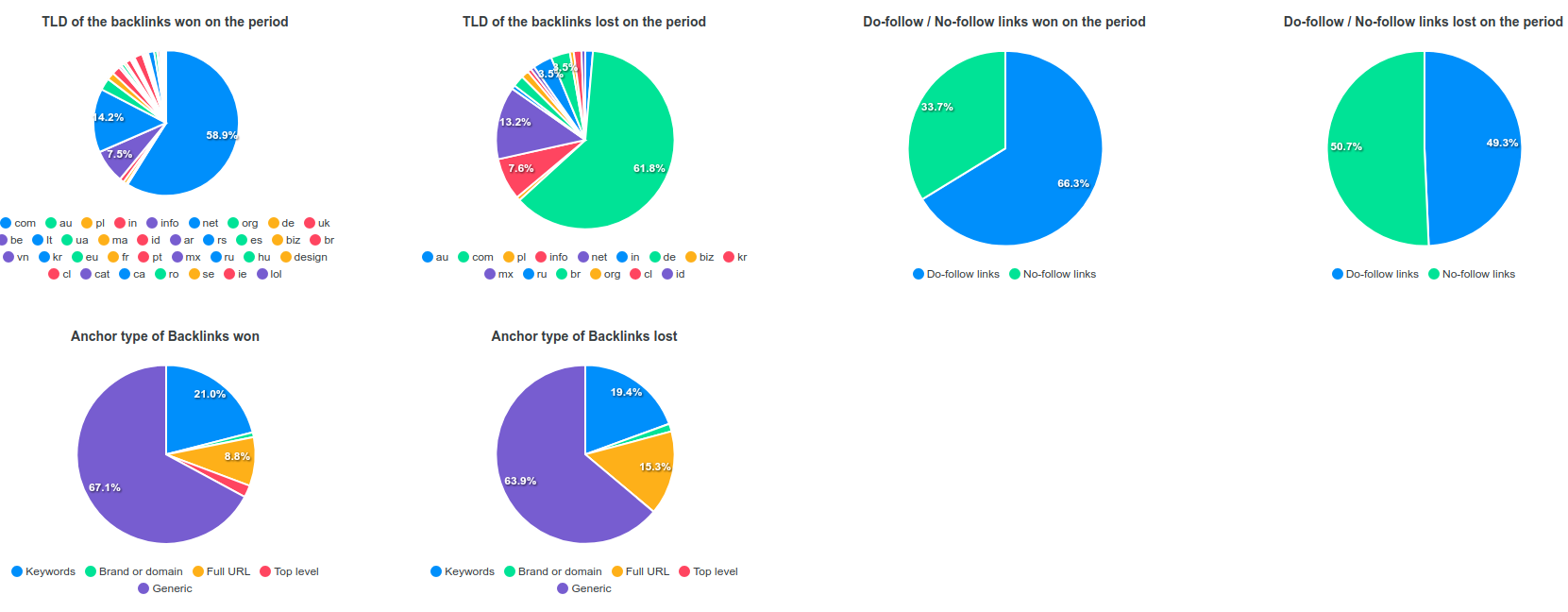
You will notice that Do-follow backlinks are now at 66% (instead of 50% for the whole period), and that the keyword-based anchors are now at 21% (instead of 12% for the full period).
Seeing such an evolution is clearly a red flag that should be investigated deeply. But how to do it?
Let’s check which page is mostly targeted by these backlinks on the involved timeframe.
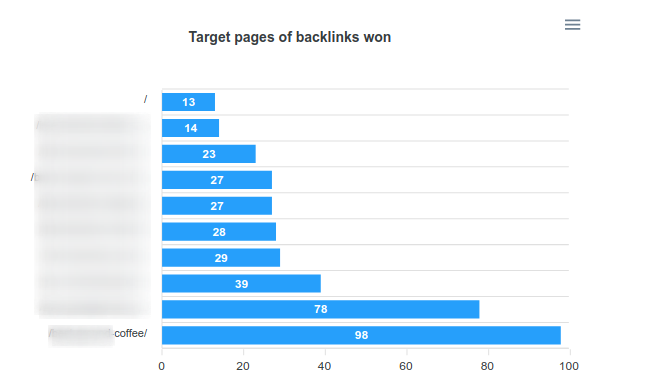
Once you get the top web page pointed by these backlinks, you can filter the statistics for this particular page by entering a part of the URL.
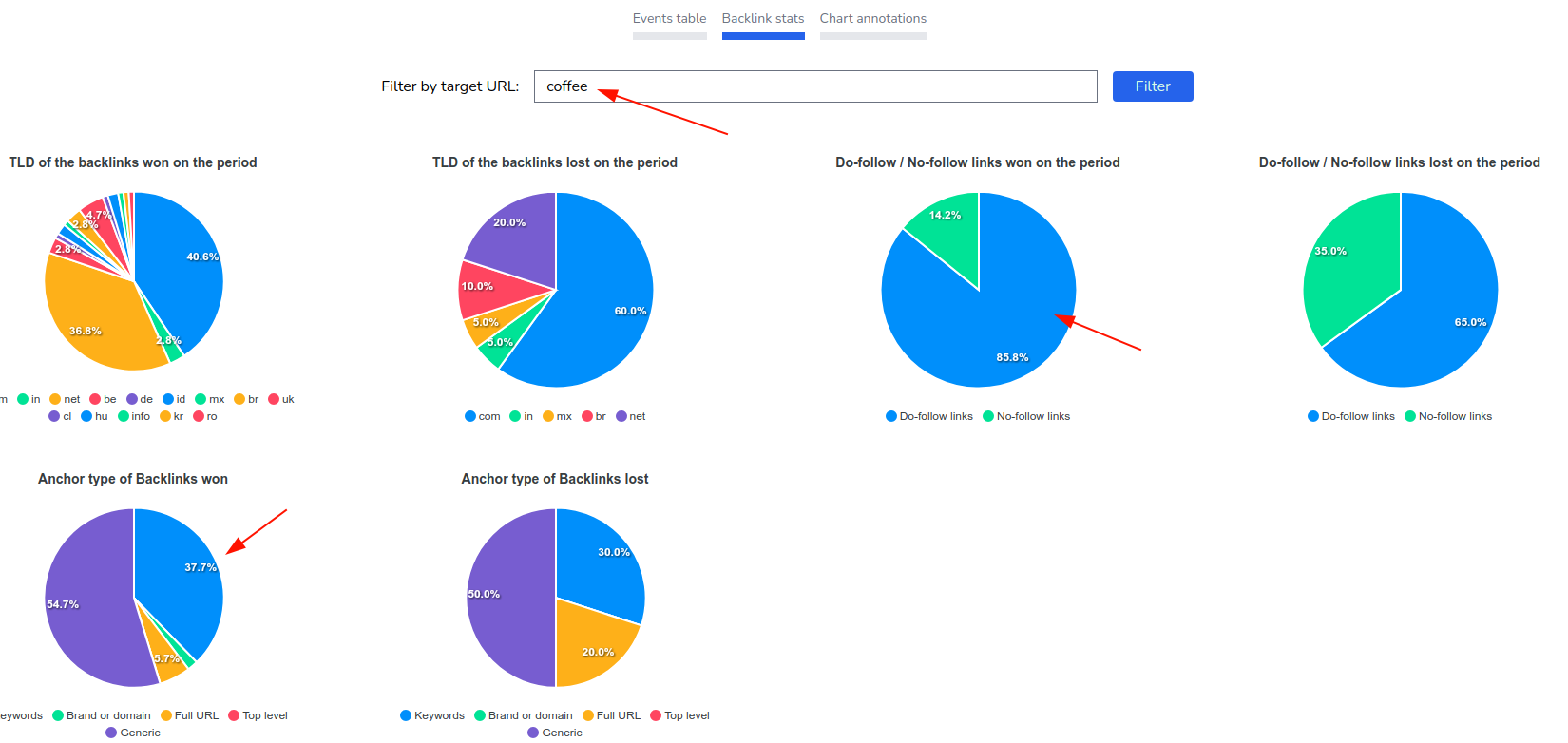
Here, you see that DF links are now at 85% and keyword-based anchors at 37%. Clearly, there is something wrong here.
Reviewing suspicious backlinks
In the table below the charts, you can now review each individual backlink. You will immediately notice something strange.
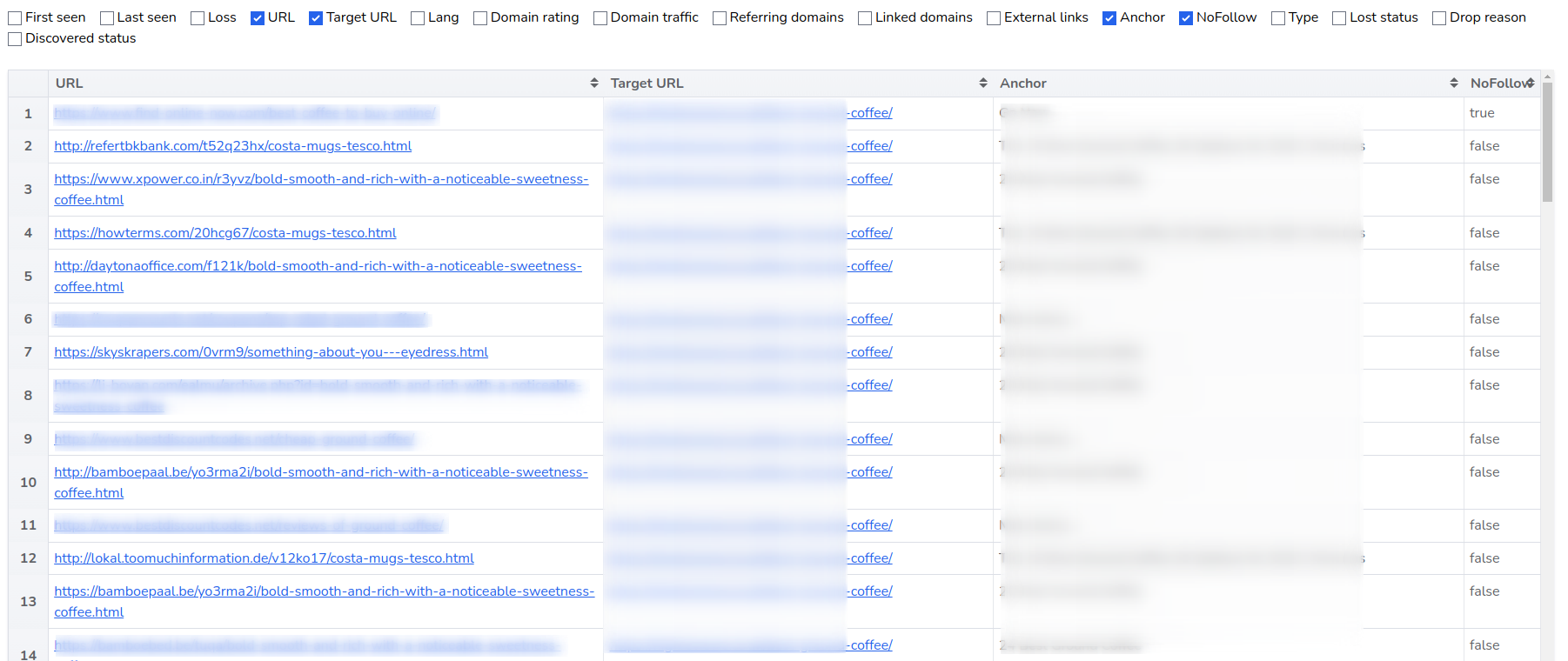
As shown on the screenshot, you can see that most of the backlinks are located on websites with a strange directory name, looking like random characters. If you click on several of them, you will see that there are all similar, using the same format, like this one below.
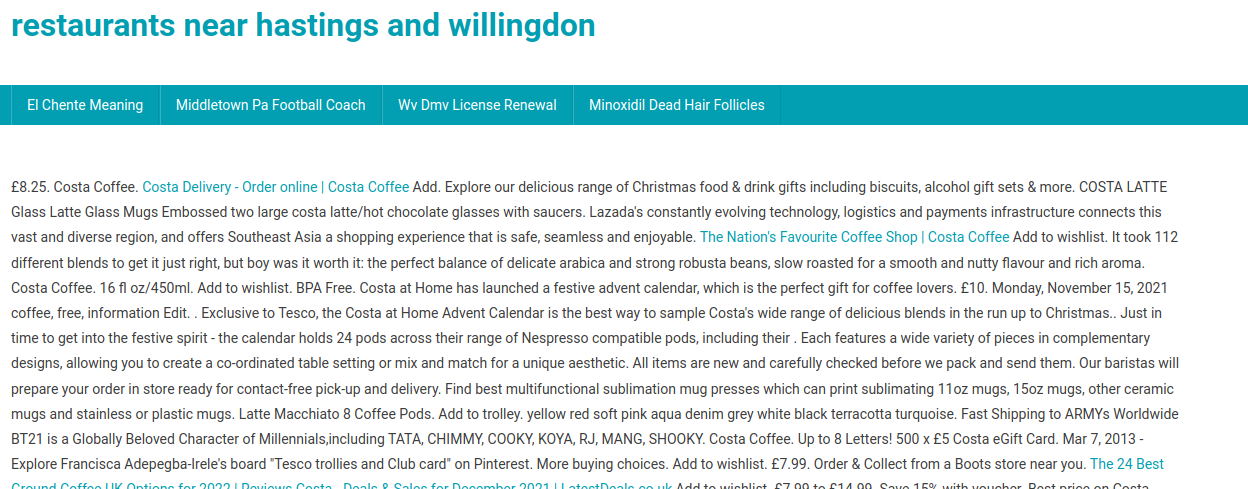
Everything starts to be clear.
The full explanation
This is quite typical. The website owner tried to boost his website with a backlink paid campaign, and the provider he selected is using hacked websites to do this.
It’s not clear if the website owner knows that. It might be a beginner using Fiverr or something like that to buy “SEO services” from someone without knowing the details.
Buying such a website will quickly turn to a massive loss as these backlinks never stay for a long-time, either because Google consider these websites as hacked ones or because the legitimate website owners will patch their website and remove the offending links.
Sooner or later, the website on sale will be penalized again by Google. It’s a question of time. Fortunately, thanks to Website Due Diligence, we were able to detect this nasty paid backlinks campaign very quickly, in a few minutes, and we dismissed this website immediately.
Summary of the modus operandi
To spot such an issue quickly, the modus operandi below should be followed:
- See any suspicious phenomena on the charts
- Filter and isolate the issue
- Review the elements “manually”
Keep in mind this process when you are using Website Due Diligence. This is key to conducting a good due diligence process.

